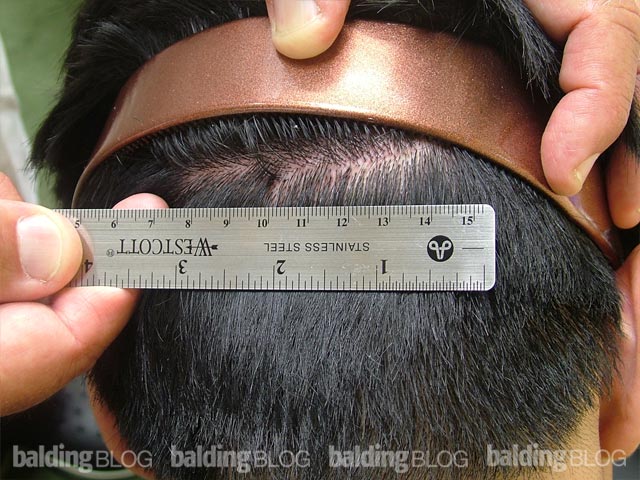Dr. Rassman,
I’m a 40 year old male. The scar (which almost encircles my entire donor area -sides and back) left from my transplant (which was done 2 years ago) becomes visible when my hair is wet or if I cut my hair at the length I’d like to wear. I read an earlier question regarding the visibility of scars. Will Mederma help – or is there some type of procedure which can alleviate this problem? There are no keloids, but, rather, no hair is growing on the scar, nor, it seems, around it.
Thanks

What you tell us about the visible wounds is distinctly different than what we may judge when we examine you. There is a more see-through appearance when fine hair is wet, so I would not be surprised to see a very small scar. Assuming that the scar is not small, we would want to know the measurements of the wound (length and width), the size of the donor strip that was taken, and how many grafts you actually had done. Wounds have a pull which ‘want‘ to stretch and good wound healing gets around that pull as strong supportive tissues are laid down by your body to bond the wound together. Assuming that the techniques used were modern techniques by competent doctors, then we would want to know how tight your wound was at closure and what is the laxity (looseness) was at the time of surgery and now. Tight scalps may have a tendency to widen scars (by increasing the pull on the edges) when placed under tension.
Each of us is put together with different types of collagen. Those of us who have extra elastin put down by your body in the healing process have a tendency to stretch a wound more than those of us with less elastin. Simply excising the scar may or may not address the defect and my experience in some of these wounds is that they may return at the same level that they had reached prior to excising them. On some patients, scar revisions have been able to reduce wound width.
There are two factors you must consider for revising a scar:
- Your body’s inherent ability to heal and deal with scars, which no one has control over
- The surgical techniques used to minimize the scar
I can offer you the best surgical techniques available, however if your body does not heal what I do, you may not achieve the results you are looking for — so you do have a risk here. I have rarely, if ever, seen a scar worsen on an attempted repair. Repairs can be done with a scar revision and trichophytic closure or a transplant (could be an FUE) into the scar.
It is important to be aware that any cut on the skin will leave a scar in 100% of patients. If you are going to shave your scalp completely or cut your hair too short, there will almost always be a detectable scar even with the best case scenario.
To see an example of a great result from a trichophytic closure, check out the post from a couple of days ago — Result from Trichophytic Incision.



